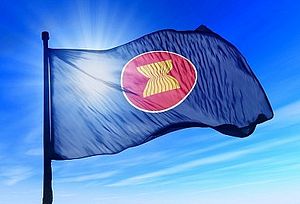As I have written before, Malaysia’s chairmanship of the Association of Southeast Asian Nations (ASEAN) this year will be a busy one. In particular, 2015 is a critical year for regional-community building and economic integration because of the formation of the ASEAN Community as well as the expected completion of the Regional Comprehensive Economic Partnership (RCEP).
That doesn’t mean we won’t see progress on the defense side of things in 2015. We are still in the early stages of things in this realm as a flurry of meetings take place in the first quarter that culminate with the ninth ASEAN Defense Ministers Meeting (ADMM) in Langkawi in March, followed by other critical engagements in the rest of the year. But there are already signs of what we might expect.
A good preview came earlier this week at the 12th ASEAN Chiefs of Defense Forces Informal Meeting (ACDFIM) in Kuala Lumpur. Jane’s Defense Weekly, along with other regional news outlets, reported that Malaysian CDF general Zulkifeli Mohammed Zin, speaking as host of the meeting, said that he and his counterparts were mulling several proposals to deepen defense collaboration. These included formalizing the ACDFIM, integrating CDFs from the broader ASEAN Defense Ministers Plus (ADMM-Plus) umbrella into dialogues, and expanding current bilateral exercises into multilateral ASEAN ones.
While these measures are not entirely new and will require formal approval, they are promising for those who follow ASEAN closely. Formalizing ACDFIM after over a decade is not just a formality if it means equipping it with a secretariat and facilitating an expansion of its role to include information sharing as well as perhaps even building a database of sorts, as preliminary reports are suggesting.
Expanding dialogues to include CDFs from ADMM-Plus – which includes all ten Southeast Asian countries as well as Australia, China, India, Japan, New Zealand, South Korea, Russia and the United States – is a move that has been contemplated for a while, as I have pointed out before, and it makes sense. That forum is where a lot of the action has been happening of late, and it would be the next logical step in the broader ASEAN plan to integrate major powers into an ASEAN-centric regional architecture and give the grouping a greater voice.
Similarly, few would disagree with the idea of more multilateral exercises. Indeed, in spite of various lingering concerns, the trend in ASEAN as well as Asia more generally is already firmly in this direction, both in terms of greater regional coordination as well as connecting previously separate issue areas. Last year, Singapore set up an Information Fusion Center and Regional Humanitarian Assistance and Disaster Relief Center in Changi. More broadly, the ASEAN Regional Forum will hold the first iteration of a major disaster relief exercise (DiREx 2015) in May this year and planning has already begun for a ADMM-Plus combined field training exercise on maritime security and counterterrorism in 2016. ADMM-Plus includes six areas for collaboration – humanitarian assistance and disaster relief, military medicine, maritime security, peacekeeping operations and humanitarian mine action – but measures are being taken across them as well to promote synergies.
There could be more far-reaching measures forthcoming in 2015, some of which have been discussed privately among senior defense officials. For example, Malaysia wants greater cooperation between ASEAN militaries for humanitarian and disaster relief efforts. In that vein, a Joint Declaration on the ASEAN Ready Group may be signed this year. Malaysia is also keen to discuss setting up a joint peacekeeping team, along with greater defense industry collaboration. Seasoned observers know that both those ideas have been floated in the past and have met some resistance, so it will be interesting to see what ends up happening. Other countries have also have broached several interesting ideas, with Thailand’s proposal for setting up a regional center for military medicine being just one of them.
It is still not clear how much of this will translate into reality or when this will take place. But as Malaysia continues its work as ASEAN chair for the rest of 2015, it is important to recognize that the community-building agenda includes not only the much-discussed ASEAN Economic Community, but a Political Security Community as well which could see new initiatives broached. And even if the headlines are dominated by U.S.-China dynamics or the South China Sea yet again, it is worth paying attention to the incremental efforts being taken or mulled both privately and publicly to build habits of cooperation that are the very foundation of defense collaboration.
































